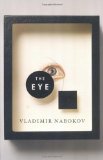Tradition and Hierarchy: Passing thoughts while at a symphonic performance
November 10, 2010
This past weekend, we attended the season-opening concert of the Portland Youth Philharmonic at the Arlene Schnitzer Concert Hall downtown. It had been a few years since I’d been inside the Schnitz, and I realized that there were a few things—traditions and hierarchies—about orchestral performances that I either took for granted or didn’t really understand fully (when pressed).
Upon arrival and during intermission, David thought up a few questions that I didn’t have the best answers for (okay, not really any answers). What is the difference between a “symphonic” orchestra and any other? What’s a “philharmonic,” anyway? And I came up with a few of my own. Do all orchestras tune to an oboe? What the heck is the point of a concertmaster? What the hell is an English horn, anyway?
My hunch about philharmonics and symphony orchestras was mostly right: they tend to be naming conventions for the entity that contains the orchestra. Nominally, symphony orchestras are larger than, say, chamber orchestras, but most professional orchestras would qualify as symphonic. On Wikipedia, philharmonic will redirect you back to the entry for orchestra, illustrating that, at least in some circles, the two terms are generally interchangeable.
About this tuning-to-an-oboe thing (is there anything more delightfully tingle-making than the sound of an orchestra tuning?). My mom, who is a veteran violin and viola player in various ensembles, had an immediate answer. Oboes, she says, have the fewest overtones and therefore most accurate to tune to. A quick whirl around the intertubes kicks up a few other claims: oboes cannot be meaningfully tuned (skilled players make up for pitch wonkiness using tricks of embouchure); oboes have a pitch that is nicely in the middle range; an oboe’s sound is clear and piercing. Pick one of your choosing there.
The concertmaster makes decisions regarding bowing and other technical details of violin playing for the violins, and sometimes all of the string players; and is in charge of leading the orchestra in tuning before concerts and rehearsals and other technical aspects of orchestra management.
That doesn’t seem that impressive. I always kind of thought the concertmaster had some sort of hidden, vast mojo to account for the amount of ceremonial hoo-hah involved.
English horns are essentially an alto oboe, with a bowl-shaped end that causes the tone to be slightly more mellow than that of its more well-known cousin. And there you go.
The concert featured American composers who were also revered educators. Bernstein’s “Serenade for Violin, Strings, Harp and Percussion” (after Plato’s Symposium) reminds me that I need to get cracking on reading my own copy.
Recently Reviewed
Get the Books
Read my Reviews
Related Posts
- My Favorite Electronica/Trance Song of ALL TIME
March 6, 2008 - Music
February 6, 2008 - Ongoing Poking Fun at Ferry Corsten
February 6, 2008 - Music: Track Pick
February 28, 2008 - Must See This
August 31, 2007



